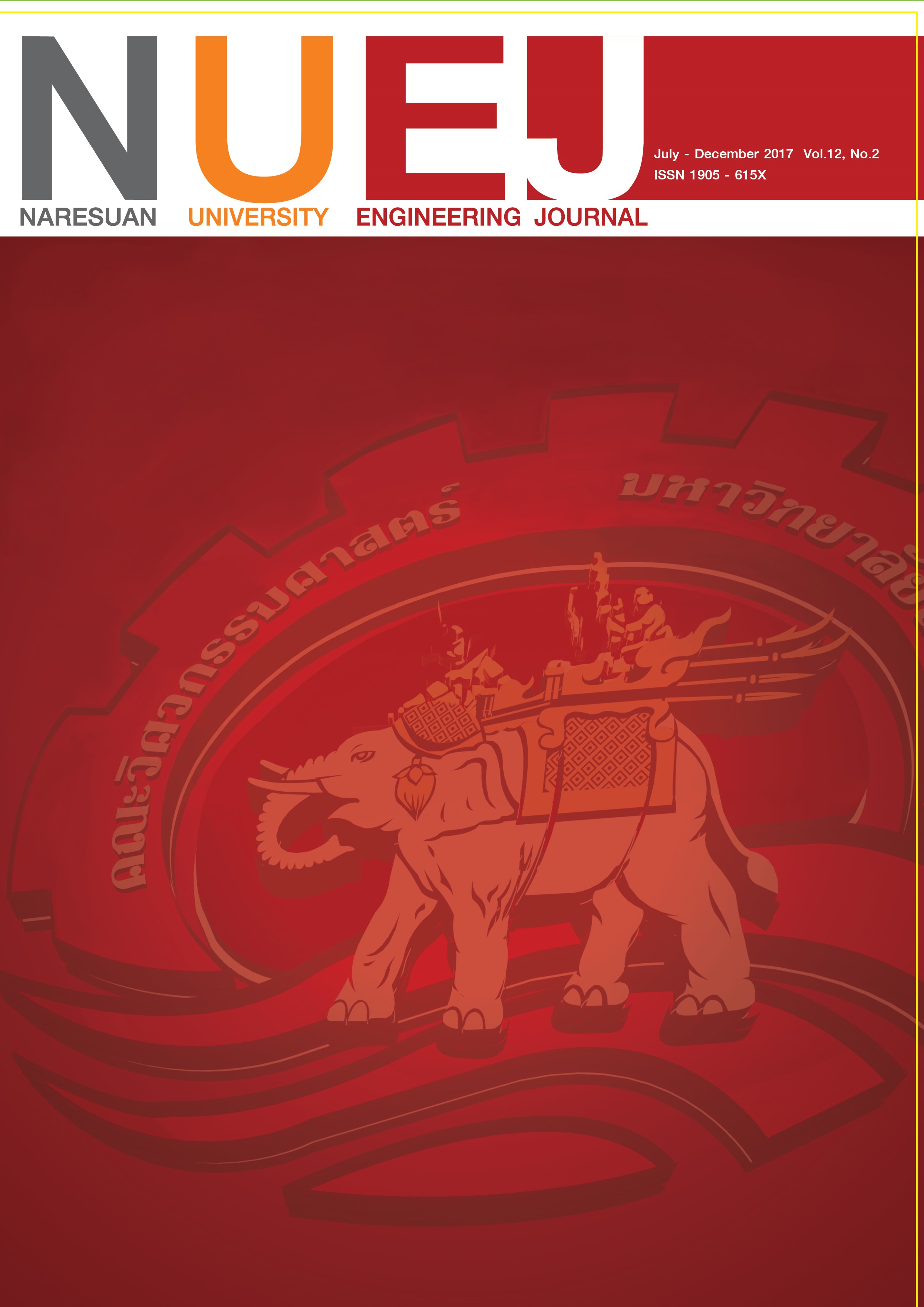Thermal Characteristics of the Hybrid Ventilation Using Solar Chimney and Earth Tube Heat Exchanger
Main Article Content
Abstract
This paper presents an experimental finding on the thermal characteristic of the hybrid ventilation by combining a Solar Chimney, SC, Earth Tube Heat Exchanger, ETHE, and small fan. A buoyancy driven natural ventilation causes an air flow inside the chimney. The latter is the pipe system buried underground, the ground operated as a heat sink. The combination of two effects would enhance the ventilation performance in which an indoor temperature could be reduced further than using just one. In this research, the square chimney made of steel plates with the outlet area of 0.09 m2 and an underground pipe system made of PVC pipe diameter of 7.62 cm (3 inch) were assembled in the small demonstration house with the volume of 0.512 m3. The thermal characteristic of the chimney and earth tube heat exchanger was investigated by an outdoor test on the two identical houses, the reference and the hybrid ventilating houses. Air flow velocity, temperature and solar radiation were measured and be used in the analysis. It was found that the stack effect could provide natural ventilation according to the airflow velocity measurement; however, the better result can be achieved when the force flow due to the use of a small fan, 4.5 W, was adopted to increase the air velocity through the ETHE thus greater indoor temperature reduction can be achieved. The hybrid ventilation system proposes good thermal characteristic under the current study criteria evident by the indoor temperature reduction of 3.6oC which is higher than other configuration by 33%. This technique is considered a prominent part of the building application
Article Details
References
Ong, K.S. & Chow, C.C. (2003).Performance of a solar chimney. Solar Energy, 74, 1–17
Mathur, J. Bansal, N.K. Mathur, S. Jain, M. & Anupma. (2006). Experimental investigations on solar chimney for room ventilation. Solar Energy, 80, 927–935
Chantawong, P. Hirunlabh, J. Zeghmati, B. Khedari, J. Teekasap, S. Win, M. M. (2006). Investigation on thermal performance of glazed solar chimney walls. Solar Energy, 80, 288–297
Sudprasert, S. Chinsorranant, C. Rattanadecho, P. Numerical study of vertical solar chimneys with moist air in a hot and humid climate. (2016). International Journal of Heat and Mass Transfer, 102 , 645–656
Chenvidyakarna, T. Woodsa, A. Multiple steady states in stack ventilation. (2005). Building and Environment, 40, 399–410
Peretti, C. Zarrella, A. Carli, M.D. Zecchin, R. The design and environmental evaluation of earth-to-air heat exchangers (EAHE). A literature review (2013). Renewable and Sustainable Energy Reviews, 28, 107–116
Waewsak, J. Klompong, N. Kongkul, K. 3-D numerical modeling of heat transport phenomena in soil under climatic conditions of southern Thailand (2015). Walailak Journal of Science and Technology, 12, 703-720

